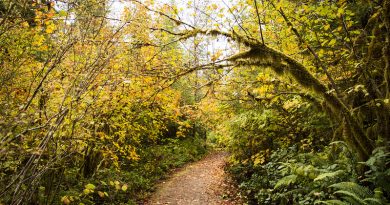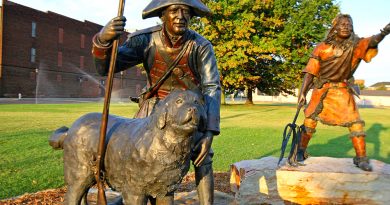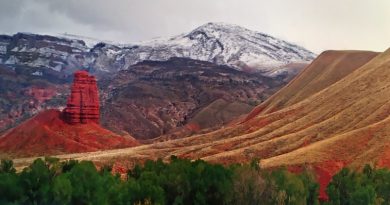Horsepacking Yellowstone National Park
Trek Essentials
Where: A huge two million acre site crossing into the states of Montana, Idaho and Wyoming USA
Best season: Summer is the best time for horsetrekking, when you can feel the warm sun and wind in your hair.
Best sights: Geysirs, howling wolves and grazing bison
Remember to bring: Waterproof tent and durable sleeping back.
Yellowstone National Park is probably one of the most famous places in the whole of the USA, conjuring up visions of wide open spaces, mountains, buffalo, belching geysers and of course, Yogi Bear! The truth is not very far off the myth. While it’s the most visited National Park in the United States, it’s also one of the least explored. Yellowstone National Park covers two million acres within three states, Montana, Idaho and Wyoming. In no other place is wilderness more alive than in Yellowstone and taking a horse into the heart of the park is a perfect way of getting to see things that normal tourists don’t see from the comfort of their cars.
Highlights
– Seeing herds of elk, buffalo and wild bison grazing in the autumn sunshine
– Listening to the howl of a wolf pack just beyond the trees as you snuggle down for the night in your warm sleeping bag.
– Watching the eruption of one of Yellowstone many geysers – nature at her finest.
Our Journey Path (as featured in Best Treks)
Cristina LaMonica’s horsepacking trek begins at the Park’s east entrance. From there, she and her guides, Mike and Erin Thompson, ride east along the Pelican Creek Trail toFishing Bridge. From here they head north, and join the Astringent Creek Trail towards Wapati Lake and their campsite. The next day Cristina and team rejoin the Pelican Creek Trail and return to the trail-head, a round trip of about thirty miles.
Travel Tips
Preparing camp for the night is a must. The horses are hobbled so they can’t wander too far. Food must be hoisted up into the trees, out of the reach of marauding bears.
Yellowstone is about eight thousand feet above sea level, so it gets real cold real quick. Bring durable, waterproof tents and warm sleeping bags.
One of the most important things for a horse trip into the back country is to pack your things properly. Pack horses carry the bulk of the equipment, clothing and food and everything must be split up evenly between the packs.
Did you know?
– Three million visitors come to Yellowstone National Park every year. Most of them stay in only about ten percent of its vast area.
– Wapiti is a Native American name for elk. Many of the trails through Yellowstone follow old native routes.
– Yellowstone has over ten thousand thermal features including nearly 250 active geysers fuelled by heat from molten rock, which is closer to the surface here than anywhere else on earth. In fact, the name Yellowstone comes from the yellow sulphur deposited beside the thermal vents. The geysers were created by the collapse of an ancient volcano around 600,000 years ago.
– Yellowstone is home to the country’s last wild bison herd. Two thousand of these protected animals roam its valleys and meadows. Yellowstone has the largest concentration of mammals in the lower 48 states. You’ll see elk, black bear, grizzly bears, moose and bison. But beware: the bison weigh 2,000 pounds and can sprint at 30 mph. They have been known to gore visitors who have approached them too quickly. Elk too, can also be deadly if startled. The bottom line? View the animals from a distance.
– The world’s largest fossil forest can be found at Yellowstone’s Specimen Ridge
– It’s a modern myth that native Americans never ventured into the heart of Yellowstone in the past. In fact, the Shoshone, Tukudikaaas and Bannocks moved through the area and you can still see the evidence. At the Bannock Trail, you’ll see rutted marks left by their travois, as they moved across this part of the park to and from their hunting grounds.
– In 1998, Yellowstone was hit by a devastating fire. The fire burned from April until October, devastating 36% of the park, or nearly 800,000 acres. It took 25,000 fire-fighters to bring it under control. But the eventual effect was positive, as huge areas are now regenerating and new vegetation is springing up in the wake of the devastation.
– Yellowstone is only place in the continental United States which has an eco-system that is exactly the same as before the arrival of Europeans. But this has been a long and difficult process. The protection has been there since the park was created in 1872 (the first in the world), but this has also meant that predators such as the wolf were controlled to the point of extinction around here. The last one disappeared in 1923. This meant that elk had to be culled with no natural predators. Thankfully, the balance is now being redressed with the successful re-introduction of the wolf in 1995. This sensitive balance is controlled by wildlife rangers and biologists.
MORE INFORMATION
Wilderness Pack Trips, Inc
Livingstone, Montana
59047 USA
Tel: (406) 222 1712
Email: Packtrips *at* aol.com
Travel Montana
1424 9th Avenue
Helena, Montana
59620 USA
Tel: (406) 444 2654 Fax: (406) 444 1800
Wyoming Department of Travel and Tourism
The Official Yellowstone National Park Website
Yellowstone Net
A more commercial Yellowstone site, where you can book your trip as well as learn more about the Park.
Wyoming Business Council
Division of Travel & Tourism
I-25 at College Drive
Cheyenne, Wyoming
82002 USA
Tel: 1-307-777-7777 Fax: 1-307-777-6904
From the United Kingdom, you can also contact:
Rocky Mountain International – UK
P.O. Box 13653
London SW5 OZR
United Kingdom
Tel: 0660-66-77-22




